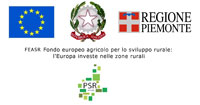Barbera D'Alba processing
For Barbera d'Alba the first intervention in the vineyard is the fertilization, which is done in autumn, at the end of the harvest, in order to give back to the soil and to the vine the energies spent in the ripening of the grapes. Identifying, from the color of the leaves, the needs of each plant, I manually sprinkle the soil with organic substance: cow manure or humus. Subsequently, after the fall of the leaves, I start the winter pruning leaving for each plant only one shoot with a number of buds ranging from 5 to 8.
The first thinning out is done in the middle of July and it consists in removing from every single plant the 50% of the production; 5 bunches are left on the shoots.
The second thinning out takes place in mid-August and consists in reducing the bunches by eliminating the lower part; each bunch is cut in half, keeping the upper part intact, which is the one richest in aromas and fragrances.
These shrewdnesses allow me every year to harvest very healthy and ripe bunches, rich in sugars and fragrances that through fermentation are kept unaltered in the wine.
At the end of this process, with a high density of vines per hectare, 7000 - 7500, I obtain a very low yield: 500g per vine. Bearing in mind the production disciplinary of Barbera d'Alba is of 100Qli/Ha of grapes, with this kind of thinning in my vineyards I do not exceed the production of 35Qli/Ha.
At harvest time the harvested bunches are put in small crates in order to preserve their integrity and quality and brought to the winery for pressing. In all the various operations in the cellar I do not use any substance that can alter the characteristics of the wine such as an increase in color, structure, fragrance or tannin.
After pressing, the alcoholic fermentation of Barbera d' Alba takes place in stainless steel tanks, spontaneously with only indigenous yeasts, for a period ranging from 10 to 30 days. Subsequently, by increasing the temperature of the cellar and bringing it to 20°C, malolactic fermentation takes place spontaneously.
Barbera d'Alba is then aged for one year in 100% new French oak barriques.
At the end of this period, the wine is not clarified or filtered, but cleaned by natural decantation in stainless steel tanks.
The wine is bottled in July with the waning moon in 750ml bottles and 1,5L magnum bottles; before being put on sale, the wine undergoes a further refinement of 6 months.
I would like to underline that at the end of these operations the content of sulphites, the only substance foreign to the grapes present in the wine I produce, is always less than 50% of the quantity allowed by law.

